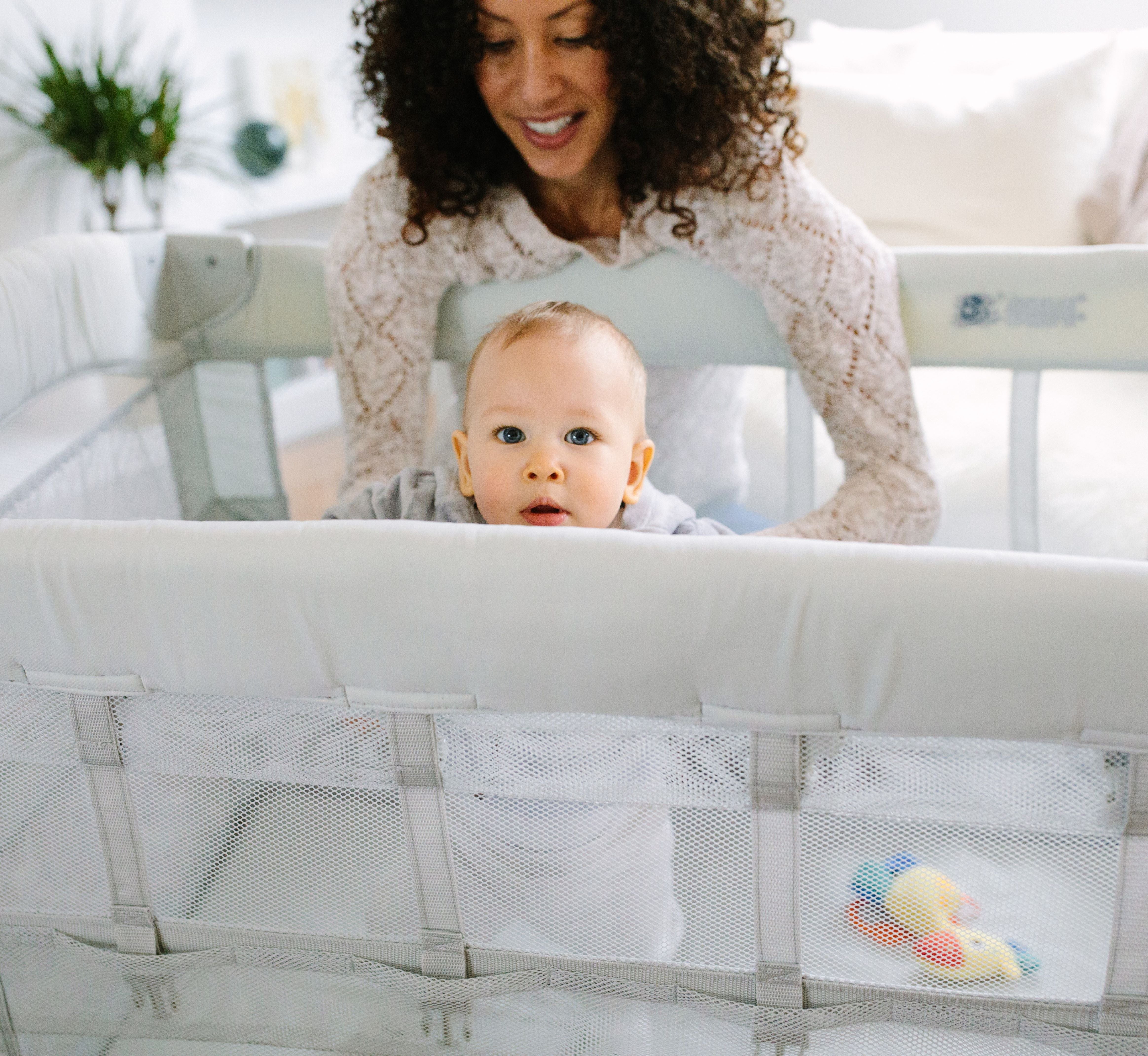
The question, "How long can a baby sleep in a bassinet?" is one of the many asked by parents when they start to create a list for their baby registry. Bassinets are a popular option because it enables a baby to sleep in close proximity to parents, facilitating feeding and bonding. A bassinet, such as the Arm's Reach® Co-Sleeper® Bassinet, creates a secure environment for a baby to sleep. The baby can rest within arm's reach, ensuring safety and convenience.
What is a bassinet?
Before we talk about how long a baby can sleep in a bassinet, let’s talk about what a bassinet actually is and does. Understanding what a bassinet is and how it differs from a crib is important. A bassinet, designed specifically for newborns, is smaller than a crib. Once a baby begins to push up on hands and knees or reaches a certain size or weight, they should be transitioned to a crib. Bassinets are typically positioned adjacent to the parent's bed, allowing for easy supervision of the baby throughout the night. One advantage of a bassinet is that it simplifies nocturnal feedings—you can easily pick up your baby without leaving your bed.
How long can a baby sleep in a bassinet?
Determining when to stop using a bassinet is essential for safety reasons. Most babies should make the transition from the bassinet between four to six months of age.
Does height and weight matter when to transition from a bassinet to a crib?
It's essential to review the height, weight, and other safety guidelines provided by the manufacturer of your particular bassinet. Below we’ve offered information about top selling bassinets from Arm’s Reach.
Regardless of a baby’s physical size, the time to transition from the bassinet to a crib is when a baby begins rolling over, sitting up, or assuming a crawling position. This newfound movement increases their risk of falling out of the bassinet, so shifting them to a crib is crucial.
What safety information should I know about a bassinet?
The American Academy of Pediatrics (AAP) recommends room sharing with a baby for the first six months. The AAP also emphasizes that a baby should never share the same bed with parents.
How is Arm’s Reach different?
The Arm’s Reach Co-Sleeper® Bassinet was the first company to offer a bedside bassinet. It was developed by parents who wanted a safe place for their baby to sleep that was within arm’s reach. Styles like the Clear-Vue™ CO-SLEEPER® Bassinet and other models provide a safe environment for infants up to approximately five months of age and provide maximum visibility for parents.
Is there a bassinet that has multiple uses?
The experts at Arm’s Reach recommend the Mini Ezee™ 3 in 1 CO-SLEEPER® Bassinet for parents looking to have a bassinet that grows with their child. This model has three modes that grow with a baby including Bedside Sleeper, Free-standing bassinet, and Play Yard. The design has convenience in mind: it’s easy to assemble, features pockets for storage and is portable for travel. This do-it-all bassinet comes with a mattress, fitted sheet, and travel bag.
Which bassinet is best for small spaces?
For city dwellers or those who live in a small space, the Versatile™ CO-SLEEPER® Bassinet allows parents to adjust the height of the bassinet and it fits all sizes of beds. There’s also a built-in adjustable leg extension mechanism that lets parents raise the sleeping nest in one-inch increments easily. Adjustable feet can extend all the way under the bed allowing the bassinet to sit on top of the mattress. The feet are also retractable allowing the bassinet to fit close to a platform bed or an adult bed that sits on the floor.



